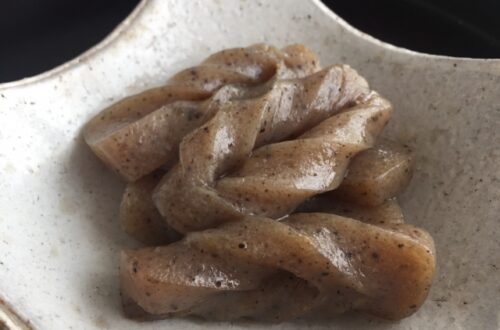
Slightly spicy vegetable, komatsuna
Japanese mustard spinach(Komatsuna) is not a vegetable native to Japan, but originally came from the coast of Southern Europe. The official name is Brassica rapa var. Perviridis.
Japanese mustard spinach has a little spicy flavor
It contains an ingredient called glucosinolates, which is not spicy as it is. When cells break down and cross with an enzyme, they turn into isothiocyanates and produce a pungent taste.
It is said that this is to protect itself from enemies. It’s similar to the spiciness of Japanese daikon radish. Japanese people like spicy flavor vegetables.
Japanese mustard spinach belongs to the Brassicaceae family. Broccoli, radish and Chinese cabbage are examples.
Brassicaceae family contains a lot of isothiocyanate that I explain above. They have anti-cancer, anti-inflammatory and antioxidant activity.
If you want to feel the spiciness of Japanese mustard spinach more, you can feel it more by cooking at low temperature.
Japanese mustard spinach does not have a bitter taste because it does not contain much calcium oxalate, and it is also suitable for smoothies.
When you cook it, take it out in boiling water for 15 seconds and boil it again for 15 seconds to make it feel more spicy than regular dishes.
Nutrition of Japanese mustard spinach(Komatsuna)
Japanese mustard spinach is rich in carotene, iron, vitamin C, vitamin K, and dietary fiber. It is also rich in folic acid and amino acids .
Carotene becomes vitamin A in the body, strengthens the skin and mucous membranes, vitamin K makes it easier to stop blood, and amino acids become umami ingredients.
Vitamin C is also abundant, so it’s a good idea to eat it when exposed to ultraviolet rays.
Similar vegetables include spinach, but calcium and iron are twice as much as spinach . (When boiled)
However, since the iron contained in Japanese mustard spinach is non-heme iron, it will be more easily absorbed by eating it with protein. Tofu and Japanese mustard spinach miso soup go well together.
How to choose good Japanese mustard spinach
You should choose, rounded leaves, lush greenery, and green stems as much as possible.
When storing, moisten newspaper or cooking paper, wrap it, and store it in the refrigerator. If you cannot eat it in 2 to 3 days, you can boil it and store it in a freezer.
Let’s eat Komatsuna!
Komatsuna is rich in nutrition and can be arranged in various dishes. It is also delicious when placed in hot pot, soup, etc. Please try Komatsuna cuisine by all means.
Click here for a recipe using Japanese mustard spinach.
(The image is A juicy and savory Japanese mustard spinach with garlic )




